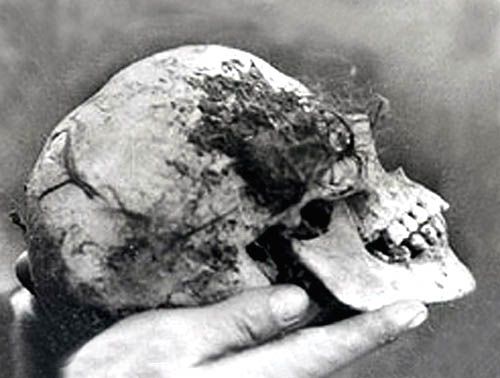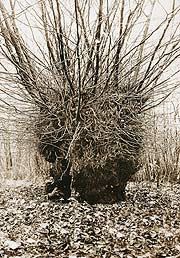Bella in the Wych Elm
A Midlands Murder Mystery
 Situated just off the Kidderminster to Birmingham Road, in the English Midlands, Hagley Wood is part of the Hagley Hall estate belonging to Lord Cobham. By day it is a beautiful if lonely spot, at night, however, engulfed in the ghostly shadows of the Clent Hills, the atmosphere is somewhat eerie. The place supposedly has a reputation for strange events, and perhaps none were stranger than what transpired there one sunny April day more than 60 years ago.
Situated just off the Kidderminster to Birmingham Road, in the English Midlands, Hagley Wood is part of the Hagley Hall estate belonging to Lord Cobham. By day it is a beautiful if lonely spot, at night, however, engulfed in the ghostly shadows of the Clent Hills, the atmosphere is somewhat eerie. The place supposedly has a reputation for strange events, and perhaps none were stranger than what transpired there one sunny April day more than 60 years ago.
On 18 April, 1943, four teenage boys from nearby Stourbridge, Robert Hart, Thomas Willetts, Bob Farmer and Fred Payne, were in the woods poaching. They came upon an old hollow elm tree (which has been mistakenly called a wych-elm down the years) and decided it would be an ideal place to search for birds’ nests. Bob Farmer attempted to clamber up into the tree, but as he glanced down inside the hollow trunk he suddenly saw the empty eye-sockets of a whitened skull, staring up at him from among the twisted branches.
At first he didn’t realise what he was looking at and thought it must belong to an animal. But as he pulled the skull out from the gnarled branches and saw a small patch of rotting flesh on the forehead, the remains of some hair, and crooked front teeth, he realised what he’d found. Horrified at the discovery and knowing they were in the woods illegally, the boys decided not to tell anyone about it. They put the skull back in the tree and quickly made their way home.
But the youngest boy, Tommy Willetts, felt uncomfortable about keeping such a secret and decided to tell his father what they’d found. Naturally his father then told the Worcestershire County Police Force, who went to the site the following morning. Inside and around the old tree they found not only the human skull, but an almost complete skeleton, a crêpe-soled shoe and some fragments of rotted clothing. During a careful search of the surrounding undergrowth a severed hand from the body was also discovered buried nearby.
The task of examining the body fell to Prof James Webster, then head of the Home Office Forensic Science Laboratory in the West Midlands, who, just prior to World War II, had set up the West Midlands Forensic Science Laboratory at Birmingham University. After a detailed examination at the lab at Birmingham, Professor Webster ascertained that the woman was probably about 35 years old, five feet tall, with mousy brown hair and irregular teeth in the lower jaw. She had also given birth at least once. He estimated that she had been dead for at least 18 months before she was found.

The original Wych Elm (actually an old hollow wych-hazel) in Hagley Wood
In other words she had died in about October 1941. There were no marks of disease or violence on the body, but her mouth had been stuffed with taffeta. The coroner declared it murder by asphyxiation, and stated that the woman was probably murdered and then pushed into the hole while still warm, as the body would not have fitted into the hollow trunk after rigor mortis had set in.
Apart from the remains of the body there were various other personal items which helped build up a reasonably accurate picture of the mystery woman.
A cheap rolled gold wedding ring, which had been worn for about four years, crepe shoes and various scraps of clothing. With these Professor Webster was able to reconstruct almost exactly what the woman had been wearing at the time of her murder, and it was then possible for the police to issue a description which must have been very close to the actual appearance of the mystery woman.
Very interesting thing you write in your articles real
spotify playlist followers buy I say this because I read most of the
posts you write and I also want to say that you have unique way of writing
study instagram followers-agency and all the topics you select to post are very interesting.